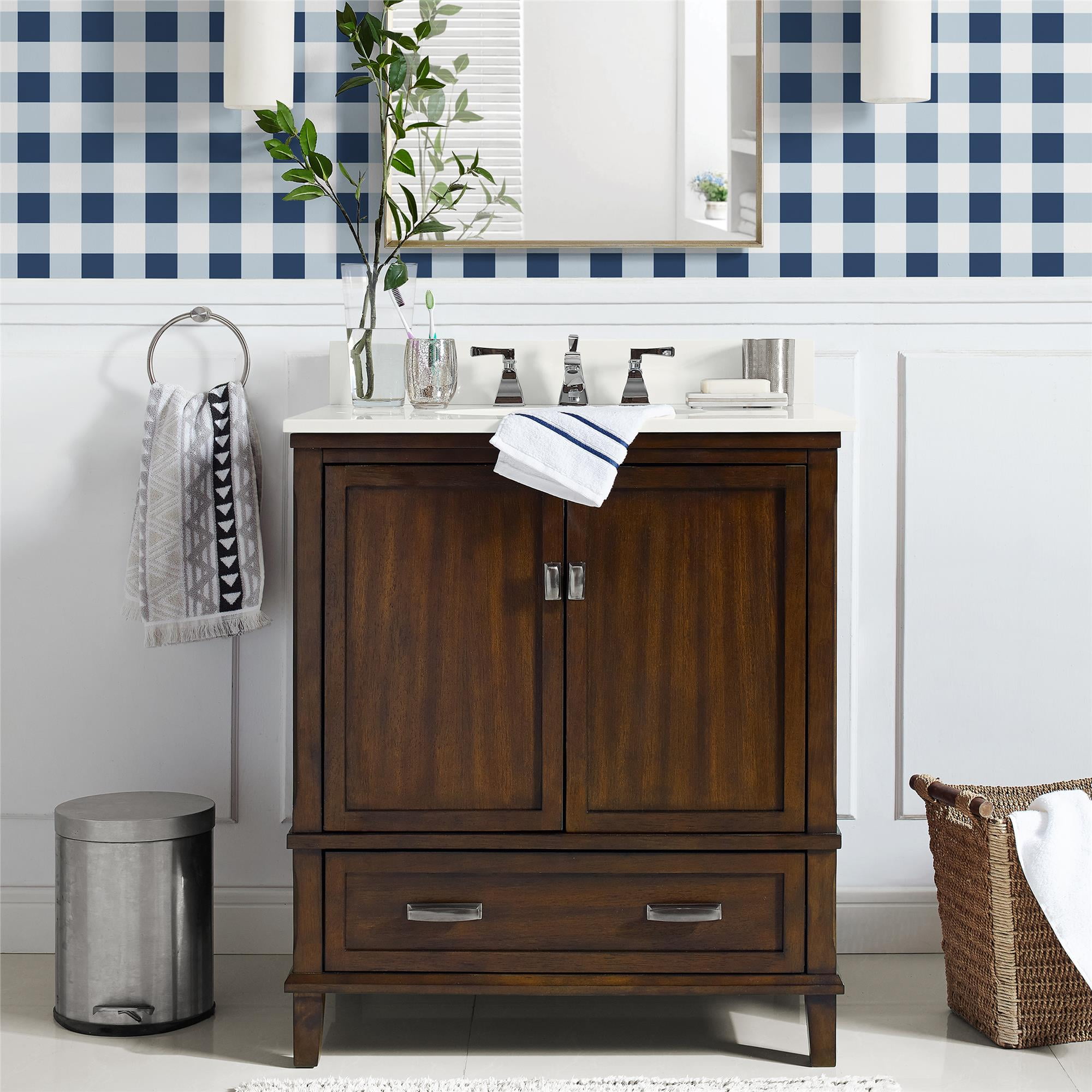Installing a 30 Inch Bathroom Vanity Cabinet: 30 Inch Bathroom Vanity Cabinet Only

Installing a 30-inch bathroom vanity cabinet can be a rewarding DIY project, adding a touch of elegance and functionality to your bathroom. This process involves careful preparation, precise assembly, and secure plumbing connections. With the right tools and a bit of patience, you can achieve a professional-looking installation.
Preparing for Installation
The foundation of a successful installation lies in thorough preparation. Before you begin, ensure you have all the necessary tools and materials.
- Gather your tools: Level, measuring tape, pencil, stud finder, drill, screwdriver, wrench, pipe wrench, adjustable wrench, utility knife, safety glasses, and gloves.
- Gather your materials: Vanity cabinet, countertop, sink, faucet, drain assembly, P-trap, supply lines, silicone sealant, screws, anchors (if needed), and installation instructions.
- Clear the area: Remove any existing vanity, fixtures, and debris from the installation space. Ensure the floor is clear and free of obstacles.
- Prepare the wall: Locate studs using a stud finder. Mark the stud locations on the wall with a pencil. If your vanity is heavier, consider using wall anchors for additional support.
- Prepare the plumbing: Shut off the water supply to the bathroom. Disconnect the existing drain and supply lines. If you are installing a new drain, ensure it is properly sealed and connected to the existing plumbing system.
Assembling the Vanity Cabinet
Assembling the vanity cabinet typically involves attaching the countertop, sink, and faucet.
- Follow the manufacturer’s instructions: Each vanity cabinet comes with specific instructions for assembly. Carefully read and understand the steps before proceeding.
- Attach the countertop: Secure the countertop to the vanity base using screws or clamps, ensuring it is level and aligned. Apply silicone sealant around the edges of the countertop to prevent water damage.
- Install the sink: Secure the sink to the countertop using the provided hardware. Ensure the sink is properly centered and level.
- Install the faucet: Connect the faucet to the sink using the provided instructions and tools. Ensure the faucet is properly secured and the water supply lines are connected to the faucet.
Securing the Vanity Cabinet to the Wall
Once the vanity is assembled, it’s crucial to secure it to the wall for stability and safety.
- Locate the studs: Use a stud finder to locate the wall studs behind the vanity. Ensure the vanity is positioned so that the mounting points align with the studs for maximum support.
- Mark the mounting points: Use a pencil to mark the locations on the wall where you will attach the vanity to the studs.
- Drill pilot holes: Drill pilot holes at the marked locations using a drill bit slightly smaller than the screws you will be using.
- Secure the vanity: Attach the vanity to the wall using the provided screws. Ensure the screws are long enough to penetrate the studs and provide secure support. If you are using wall anchors, ensure they are properly installed and securely attached to the wall.
- Level the vanity: After securing the vanity, double-check that it is level using a level. Adjust the screws if necessary to ensure the vanity is perfectly level.
Connecting the Plumbing
Connecting the plumbing is a critical step in the installation process.
- Install the drain assembly: Connect the drain assembly to the sink and secure it with the provided hardware. Ensure the drain is properly sealed to prevent leaks.
- Install the P-trap: Connect the P-trap to the drain assembly and the drain pipe. Ensure the P-trap is securely connected and properly sealed.
- Connect the supply lines: Connect the supply lines to the faucet and the water supply valves. Ensure the supply lines are properly secured and the connections are leak-free.
- Turn on the water supply: Slowly turn on the water supply to the bathroom. Check for leaks at all connections. Tighten any loose connections if necessary.
Troubleshooting Common Installation Challenges, 30 inch bathroom vanity cabinet only
Installation challenges can arise during the process.
- Uneven floor: If the floor is uneven, the vanity may not be level. Use shims to level the vanity before securing it to the wall.
- Leaking connections: If you experience leaks, check the connections for tightness and ensure all seals are intact. If the leak persists, consult a plumber.
- Difficulty aligning the sink: If the sink is difficult to align, check the mounting holes and ensure they are properly aligned with the countertop. If the sink is still misaligned, you may need to adjust the countertop or the sink.
